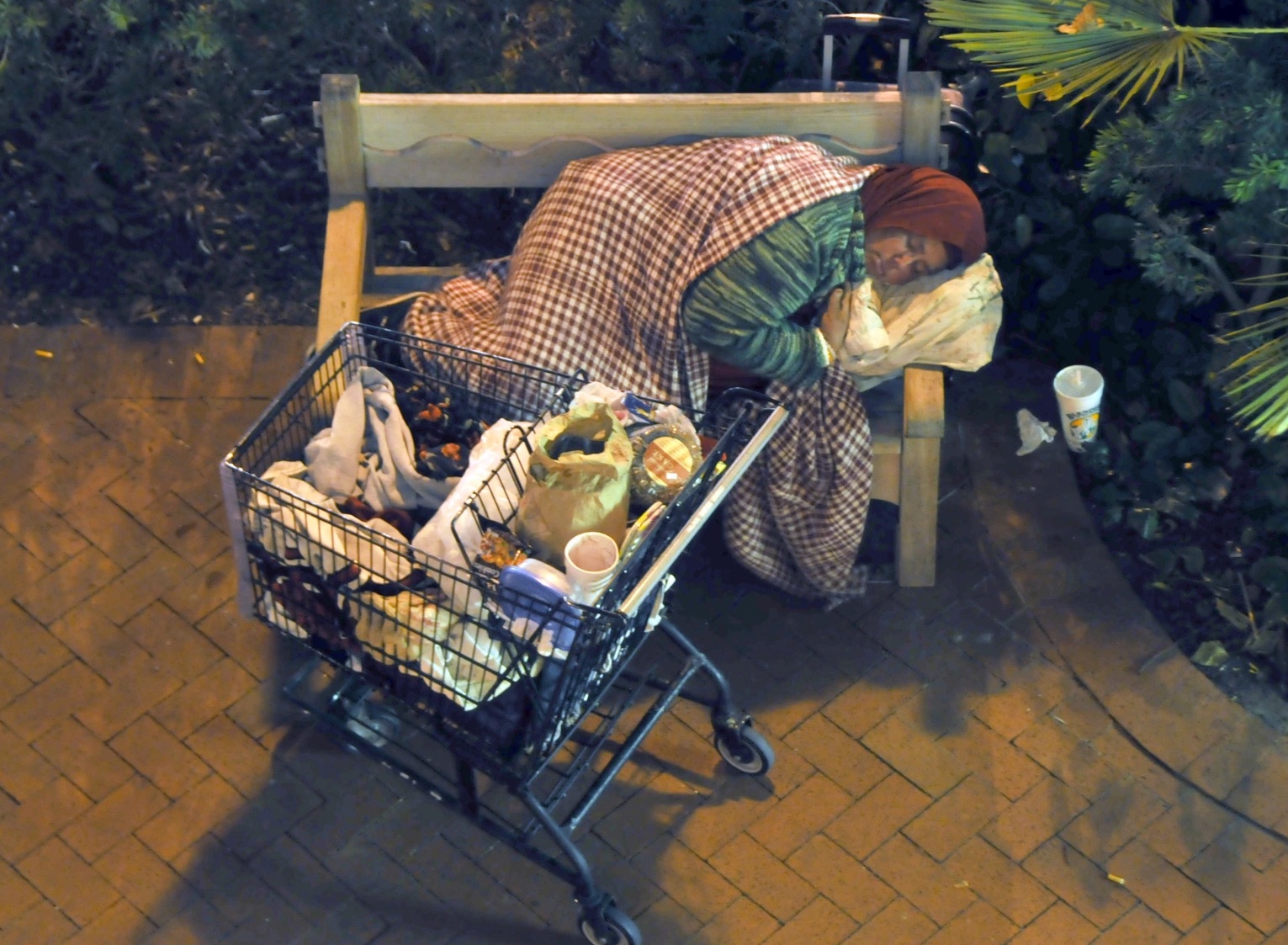When Is a Shopping Cart Personal Property?
Issues with the Abandoned Shopping Cart Ordinance

In 2019, Santa Barbara city workers retrieved 20 shopping carts throughout the city, which increased to 538 in 2020, a reflection of the worsening crisis of homelessness in Santa Barbara County.
In response, the City Council recently adopted and approved the passage of a Shopping Cart Ordinance, which went into effect on March 16, 2021. One of the rationales for passage of the ordinance was the finding that “abandoned” shopping carts “contribute to the perception of community blight and a reduction of property values in the neighborhoods where they tend to accumulate.” The new ordinance ascribes primary responsibility for managing and properly securing shopping carts with the business owner of the cart.
The new ordinance will empower city police officers and Parks and Recreation Rangers to seize “unattended” carts if there is no owner identification affixed to a cart. If a cart is not retrieved by its owner within 30 days, after the owner has received notice of the cart seizure and impoundment, or if the cart’s owner cannot be determined, the cart may be sold or destroyed by the city within 30 days after the cart’s seizure and impoundment.
Although the ordinance does not target the homeless expressly, the seizure of “unattended” homeless people’s carts that contain their personal property is inevitable and raises constitutional concerns.
First, there is no provision in the ordinance for what happens to the personal belongings stored in an “unattended” cart after it is seized. Business owners are given 30 days after notice of the seizure of a cart to retrieve it before it can be sold or destroyed. There is no similar provision in the ordinance protecting the personal property inside the cart when it is seized.
Second, the ordinance also “permits the City to retrieve ‘unattended’ carts immediately when it is in a location that could impede emergency services or when the ‘unattended’ cart does not identify the shopping cart owner as required.” This language is troublesome because it does not describe these locations with any specificity. The vagueness of the ordinance does not give a homeless person using a shopping cart sufficient notice of locations where they are not permitted to leave their “unattended” carts when doing errands or conducting other business.
Because there is no clear differentiation of an abandoned or unattended shopping cart with personal property contained in it, the seizure and destruction of that property is subject to the subjective opinion of the authorities and abuse of the property rights of the owner of the property contained in the cart that may be seized.
By not clarifying these terms and the rights of the owner of the property inside a cart that is determined to be “abandoned,” the ordinance is susceptible of arbitrary, discriminatory, and inconsistent enforcement by the city. The other problem is the unconstitutional destruction of the valuable and irreplaceable property of our unhoused neighbors.
“Unattended” property is distinct from truly “abandoned” property and is afforded constitutional protections. The Ninth Circuit underscored that before a city may sell or destroy a person’s property, “whether the property in question is an Escalade or a [tent], a Cadillac or a cart,” the owner of that property is entitled to “notice and an opportunity to be heard.” (Lavan v. City of Los Angeles, 639 F. 3d 1022, 1032 (9th Cir. 2012).)
The Abandoned Shopping Cart Ordinance needs to clarify the difference between “abandoned” and “unattended” property. The contents of a shopping cart are also distinct from the cart itself. If there is property in an “unattended” cart, rather than an “abandoned” cart, the ordinance needs to provide a protocol that gives an owner of the property “notice and a reasonable opportunity” to reclaim his/her personal belongings before the city summarily destroys it.
Additionally, the ordinance needs to adequately describe those “locations” that a homeless person is not permitted to park their cart, without the danger of it being seized arbitrarily because the city makes an ad hoc determination that an “unattended” cart “could impede emergency services.”
These constitutional defects to the ordinance need to be cured before enforcement of the ordinance begins.
The city needs to demonstrate leadership by finding viable solutions to the fallout of the homeless crisis. A solution that would help to mitigate the proliferation of shopping carts on the streets is to provide storage facilities and lockers for homeless people who have nowhere to keep their personal belongings. By providing storage facilities for a homeless person to safely preserve their property, less shopping carts would be used for this purpose, and the city would achieve its goal to minimize “the perception of community blight and a reduction of property values in the neighborhoods where [shopping carts] tend to accumulate” in a considerate and constitutional manner.
The 2019-2020 Grand Jury Report on Homelessness in Santa Barbara stated that it is time for the city to adopt “a new vision.” The real solution to the nuisance of “abandoned” shopping carts on our streets and sidewalks is to house the homeless. “Housing First” is proven to be the most effective way to solve the crisis of homelessness.
Joseph Biko Doherty is president of the People’s Justice Project, and Robert Landheer chairs the Committee for Social Justice.



